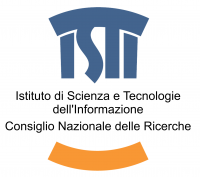Moritz Mennenga, Gary Robert Nobles, Georg Schafferer
Presentation of spatial data is a powerful tool, allowing the archaeologist to highlight the areas, and thus inferences, they deem to be of interest to the reader. But such pretty maps can be corrupted either intentionally or unintentionally. Although we try our best to present geospatial data in a way everyone can get the same message, this message can be reinterpreted in a way which was not intended. In order to get beyond our own cultural biases when presented with visually interpretable geospatial data various spatial statistical tools have been developed. Some have been designed specifically for archaeology and some have been transferred from other disciplines, notably mathematics and geography. Such methods were never designed for use by archaeologists and not tailored to the various archaeological questions we want to put to our data.
In the realm of this spatial archaeology we try to reconstruct the past based upon the materials which remain. Such reconstructions range in their scale: from the everyday habitual activities to the wider landscape setting. Our aim: to take these materials and bring aspects of various activities back to life. As such we combine the use of geospatial techniques with archaeological interpretation, but to what degree are these tools compatible with our discipline? How can they be used to shed light on the behaviour of people in the past?
Therefore, we warmly invite papers which apply analytical spatial methods and demonstrate the validity of these methods for archaeological interpretation to give meaningful interpretations to our datasets.
For example, various topics could include, but not limited to:
- The use of Tobler’s First Law of Geography for archaeological spatial distributions (e.g. spatial autocorrelation).
- Detecting structures from archaeological feature distributions (e.g. Nearest Neighbour Analysis, pattern recognition).
- Detecting spatial social structures from archaeological artefact distributions and inferences which can be derived for the social use of space (e.g. statistical manipulation of distribution data).
- Reconstructing dispersal patterns taking into account site formation processes (e.g. spatial refitting of materials).
- Detecting spatial patterns of sites in landscapes (e.g. group membership of monuments in temporal landscapes)


